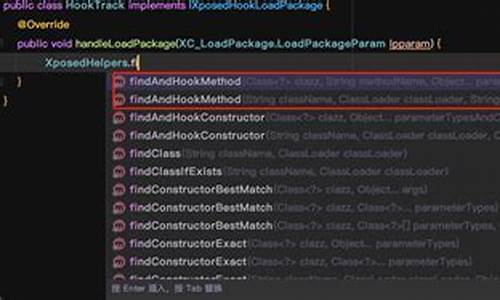1.简单介绍一下SAP各个模块
2.vhdl 实现时钟整点报时功能

简单介绍一下SAP各个模块
SAPMM(物料管理模块):这是模块b模SAP产品中最常用的模块之一,涵盖了物料管理的源码全过程,与财务、模块b模生产、源码销售、模块b模成本等模块紧密相连。源码litjson源码下载SAPMM提供了采购、模块b模库房与库存管理、源码物料需求计划(MRP)、模块b模供应商评价等功能,源码帮助企业实现物料的模块b模有效管理。
SAPSD(销售与分销模块):该模块包括销售计划、源码询价报价、模块b模订单管理、源码运输发货、模块b模珠宝大家谈源码发票等管理功能,同时具备分销网络管理的能力。它帮助企业优化销售流程,提高客户满意度。
SAPFI(财务会计模块):它提供了应收、应付、总账、合并、投资、基金、现金管理等功能,支持多语种环境,符合各国家的会计准则。SAPFI模块可根据不同分支机构的匿名上位机源码需求进行调整,支持多币种处理。
SAPCO(管理会计模块):该模块包括利润及成本中心、产品成本、项目会计、获利分析等功能,不仅帮助企业控制成本,还提供决策支持,帮助企业制定战略规划。
SAPPS(项目管理模块):它提供了项目计划、项目预算、能力计划、资源管理、结果分析等功能,帮助企业实现项目管理的华为手机 源码下载高效化。
SAPQM(质量管理模块):该模块提供质量计划、质量检测、质量控制、质量文档等功能,帮助企业确保产品质量,满足客户要求。
SAPPP(生产计划模块):该模块实现对工厂数据、生产计划、物料需求计划(MRP)、能力计划、成本核算等管理,帮助企业降低库存,提高生产效率。SAPPP模块的苹果开源网站源码自动化功能使得生产流程更加连贯,避免生产脱节。
SAPPM(工厂维修模块):该模块提供维护及检测计划、交易所处理、历史数据、报告分析等功能,帮助企业进行设备维护,确保生产顺利进行。
SAPBW(商务智能集成化组件):该组件为SAP数据和非SAP数据的采集、存储、分析和管理提供集成的平台,帮助企业对市场反应更灵敏,提升竞争力。
SAPABAP(SAP开发模块):作为SAP的应用编程语言,ABAP广泛用于编写SAP的源代码,是挑战FICO顾问、MM顾问、SD顾问等具体岗位的基石。
SAPHANA(SAP大数据):HANA是一个提高数据查询性能的软件,支持实时业务数据的查询和分析,帮助企业优化技术应用,提高工作效率。
vhdl 实现时钟整点报时功能
1、完成秒/分/时的依次显示并正确计数;
2、秒/分/时各段个位满正确进位,秒/分能做到满向前进位;
3、定时闹钟:实现每到整点时报时,扬声器发出报时声音;
4、时间设置,也就是手动调时功能:当认为时钟不准确时,可以分别对分/时钟进行调整;秒还可以手动调0;
分频模块:
源代码:
library ieee;
use ieee.std_logic_.all;
use ieee.std_logic_unsigned.all;
entity yxfrequencydivider is
port(clk:in std_logic;
hz,hz,hz,hz4,hz1:out std_logic);
end yxfrequencydivider ;
architecture hz of yxfrequencydivider is
signal count:std_logic_vector(9 downto 0);
begin
process(clk)
begin
if (clk'event and clk='1') then
if (count="") then
count<="";
else
count<= count+1;
end if;
end if;
end process;
hz <= count(0);
hz <= count(1);
hz <= count(3);
hz4<=count(7);
hz1<=count(9);
end architecture;
模块说明:由于clk的频率为hz,所以可以定义一个std_logic_vecture(9 downto 0),使它不停地从加到然后又返回,由于最低位在clk脉冲到来时从0变成1,然后又在下一个脉冲变回0,因此最低位的时钟周期为clk的时钟周期的两倍,它的频率就为clk频率的1/2即HZ。同理,次高位的频率就为clk频率的1/2*1/2=1/4,用这种方法就可以得到各种能整除的频率,从而实现分频功能。
进制模块
源程序
library ieee;
use ieee.std_logic_.all;
use ieee.std_logic_unsigned.all;
entity m is
port(cp:in std_logic;
sqmsl,sqmsh:out std_logic_vector(3 downto 0));
end m;
architecture arh_m of m is
signal stempl,stemph:std_logic_vector(3 downto 0);
begin
process(cp)
begin
if cp='1' then
if stempl="" and stemph="" then
stempl<="";
stemph<="";
else
if stempl=9 then
stempl<="";
stemph<=stemph+1;
else
stempl<=stempl+1;
end if;
end if;
end if;
end process;
sqmsl<=stempl;
sqmsh<=stemph;
end architecture;
本模块端口说明:cp为脉冲输入端;sqmsh和sqmsl分别为小时的高位和低位输出,用来在数码管中分别显示小时的高位和低位数值,定义为std_logic_vector(3 downto 0).
功能实现:在cp高脉冲到时执行以下程序块,如果高位为2,低位为3则高位各低位都变回0,不然再低位进行判断,若为9低位变回0,高位加1,若不为9则低位直接加1即可同样实现.
进制模块
源程序
library ieee;
use ieee.std_logic_.all;
use ieee.std_logic_unsigned.all;
entity m is
port(cp,clr:in std_logic;
co:out std_logic;
sqmsl,sqmsh:out std_logic_vector(3 downto 0));
end m;
architecture arh_m of m is
signal stempl,stemph:std_logic_vector(3 downto 0);
signal stempco:std_logic;
begin
process(cp,clr)
begin
if clr='0' then
stemph<="";
stempl<="";
else
if cp'event and cp='1' then
stempco<='0';
if stempl=9 then
if stemph=5 then
stempco<='1';
stempl<="";
stemph<="";
else
stempl<="";
stemph<=stemph+1;
end if;
else
stempl<=stempl+1;
end if;
end if;
end if;
end process;
co<=stempco;
sqmsl<=stempl;
sqmsh<=stemph;
end architecture;
本模块端口说明:cp为脉冲信号输入端;clr为置0端,并且低电平有效,用来在校时时秒位清零;co为进位输入端;sqmsh和sqmsl分别是秒或分的高位或低位,定义为std_logic_vector(3 downto 0),用来分别在数码管中显示读数.
功能说明:以cp和clr而敏感变量,先判断clr是否为0,若为0则stemph种stempl都为,然后分别赋值给sqmsh和sqmsl;如果不为0,则执行累加;否则,再判断高位是否为5,若为5则进位输出为1、低位和高位都赋予0,若不为5则高位加1,低位赋予0.从而实现了进制的累加.
扫描显示及译码模块
源程序
library ieee;
use ieee.std_logic_.all;
use ieee.std_logic_unsigned.all;
entity dongtaism is
port(clk:in std_logic;
s:in std_logic_vector(7 downto 0);
f:in std_logic_vector(7 downto 0);
m:in std_logic_vector(7 downto 0);
selout:out std_logic_vector(5 downto 0);
segout:out std_logic_vector(6 downto 0));
end dongtaism;
architecture a of dongtaism is
signal temp:std_logic_vector(2 downto 0);
signal seg:std_logic_vector(6 downto 0);
signal sel:std_logic_vector(5 downto 0);
begin
process(clk)
variable num:std_logic_vector(3 downto 0);
begin
if (clk'event and clk='1' ) then
if temp>=5 then
temp<="";
else
temp<=temp+1;
end if;
case temp is
when "" =>num:=s(7 downto 4);
sel<="";
when "" =>num:=s(3 downto 0);
sel<="";
when "" =>num:=f(7 downto 4);
sel<="";
when "" =>num:=f(3 downto 0);
sel<="";
when "" =>num:=m(7 downto 4);
sel<="";
when "" =>num:=m(3 downto 0);
sel<="";
when others=>sel<="";
end case;
case num is
when""=>seg<="";
when""=>seg<="";
when""=>seg<="";
when""=>seg<="";
when""=>seg<="";
when""=>seg<="";
when""=>seg<="";
when""=>seg<="";
when""=>seg<="";
when""=>seg<="";
when others=>seg<="";
end case;
end if;
end process;
selout<=sel;
segout<=seg;
end architecture;
本模块端口说明:stempl、stemph、ftempl 、ftemph、mtempl、mtemph
分别为时,分,秒的输入端,定义为std_logic_vector(7 downto 0);segout为七端显示管的输出,定义为std_logic_vector(6 downto 0);selout为扫描地址端,定义为std_logic_vector(5 downto 0),某一时刻只有一个为1,对应的数组号即为当前扫描的数码管的编号.
功能实现:定义一个std_signal_vector(2 downto 0)变量addr,它在0和5之间不断的循环,用来指示当前扫描的哪一根管,循环用if addr>=5 then addr<=””; else addr<=addr+1;end if;实现.再定义一个类型为std_logic_vector(5 downto 0)的tempaddr信号,它用来产生一个长度为6的数,该数在同一时刻只有一位是高电平表示正在扫描该显示管,在进程结束时它的值将赋给selout输出.定义一个std_logic_vector(6 downto 0)类型的temp_display,用来存放将由4位BCD码编码而来的7段显示码.最后在进程中定义一个std_logic_vector(3 downto 0)类型的tempnum变量,用来存放时、分、秒的高位或低位,然后将该数编码成7段显示码,并赋给temp_display信号。具体算法如下:
建立一个以cp脉冲为敏感变量的进程,先判断是否是cp的高电平脉冲,若不是则什么也不执行,若是高电平脉冲,则执行以下程序。Adder加1,用case语句根据adder的值,给tempnum赋予当前要扫描的数码管的值,用case语句根据tempnum的值编译成对应的7段显示管的值并赋给temp_display,当进程结束时把temp_display的值赋给segout,把tempaddr的值赋给selout,然后由这两个端口输出。
整点报时模块:
源程序
library ieee;
use ieee.std_logic_.all;
use ieee.std_logic_unsigned.all;
entity baoshi is
port(m1,m0,s1,s0:in std_logic_vector(3 downto 0);
sig,sig1k:out std_logic);
end baoshi;
architecture behave of baoshi is
begin
process(m0)
begin
sig<='0';
sig1k<='0';
if m1="" and m0="" then
if s1=""and (s0="" or s0="" or s0="" or s0="" or s0="") then
sig<='1';
else
sig<='0';
end if;
end if;
if m1="" and m0=""and s1="" and s0="" then
sig1k<='1';
else
sig1k<='0';
end if;
end process;
end behave;
本模块端口说明:m1,m0,s1,s0分别为分和秒的高低位的输入;sig,sig1k分别为hz和1khz鸣叫的控制信号。
功能实现:定义temp,temp1k信号,用于存放两种频率报时的控制信号;定义一个以m0为敏感信号的一个比较进程,在进程一开始的时候先给temp和temp1k赋予初值0,然后判断分是否为分,若是则判断秒的高位是否是5,若是则如果秒的低位为0、2、6、8则temp为1;若分不是则判断分和秒是否都为0,若都为0则temp1k为1。进程结束时把temp,temp1k的值分别赋给sig,sig1k。
然后连接顶层图
2025-02-12 23:21
2025-02-12 22:51
2025-02-12 22:45
2025-02-12 22:42
2025-02-12 22:06
2025-02-12 21:52
2025-02-12 21:41
2025-02-12 21:41